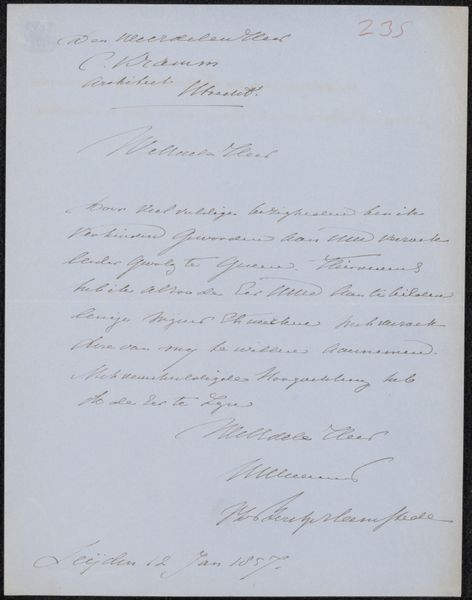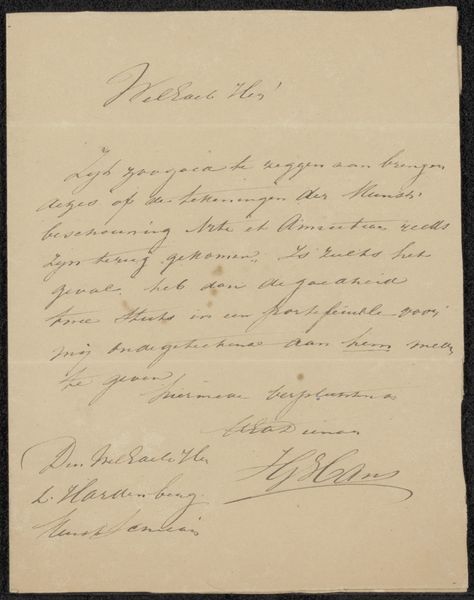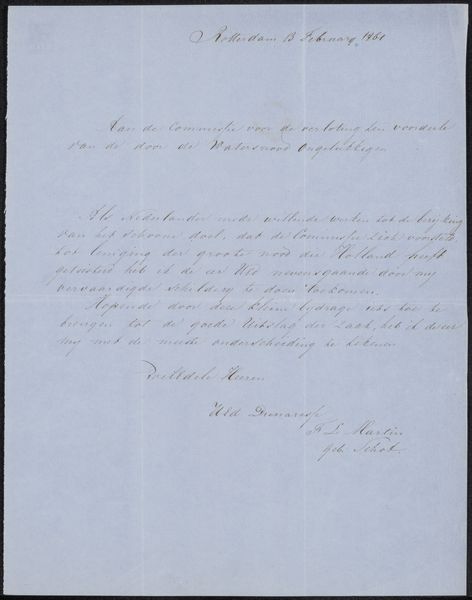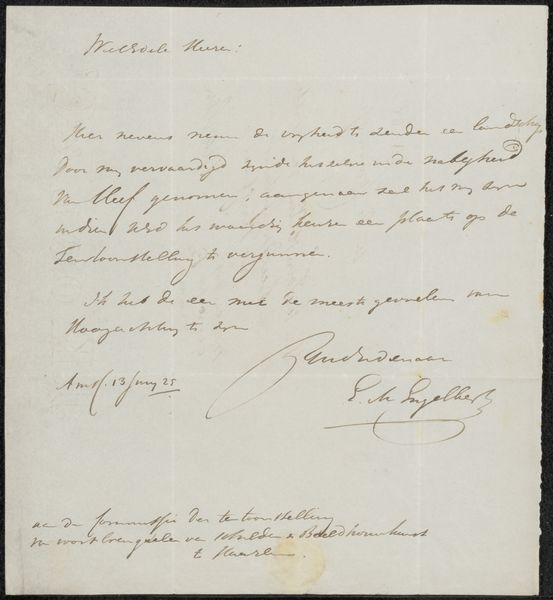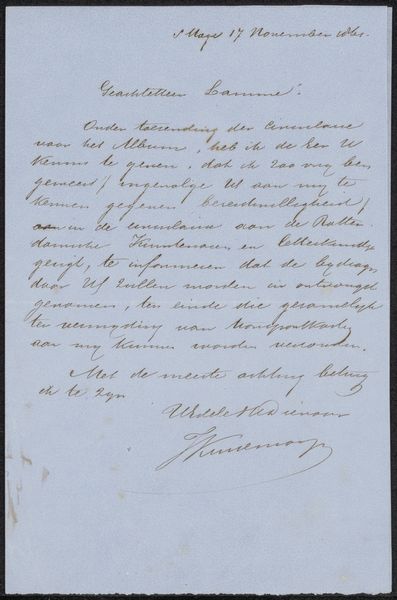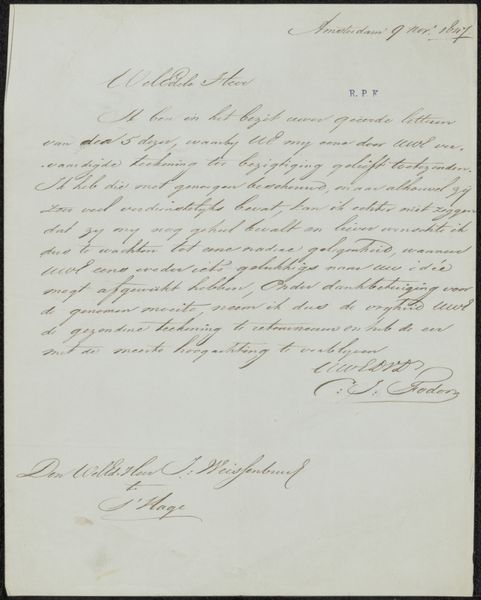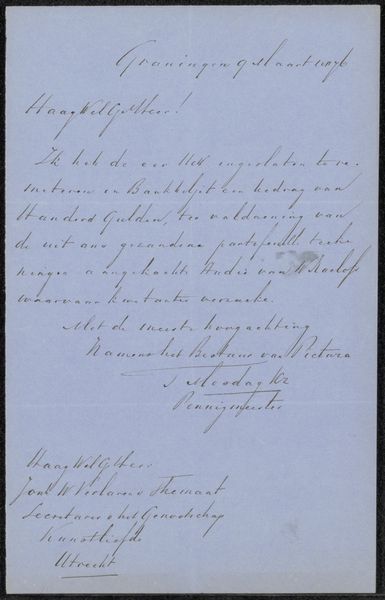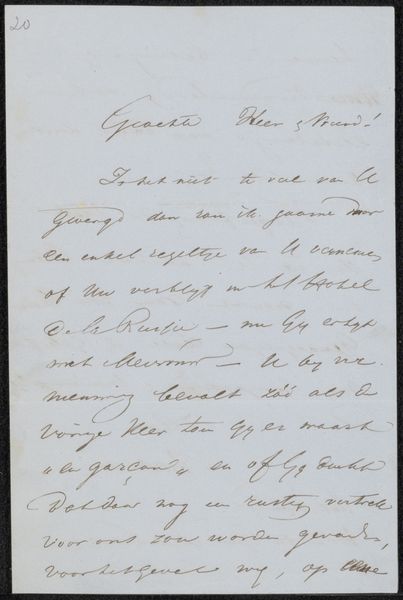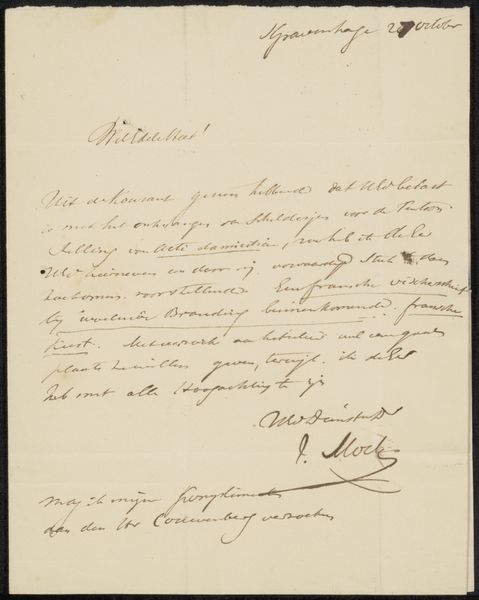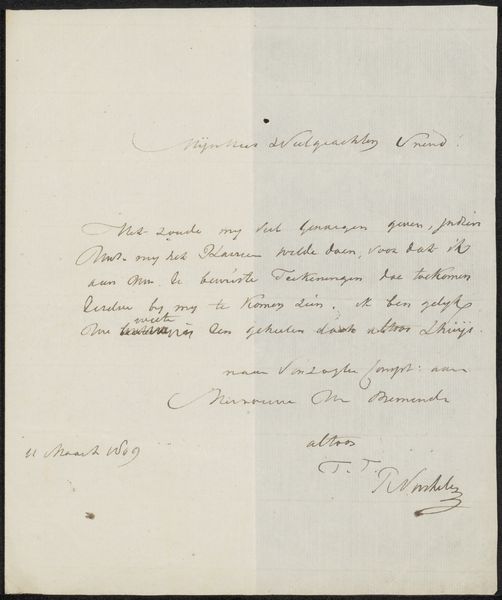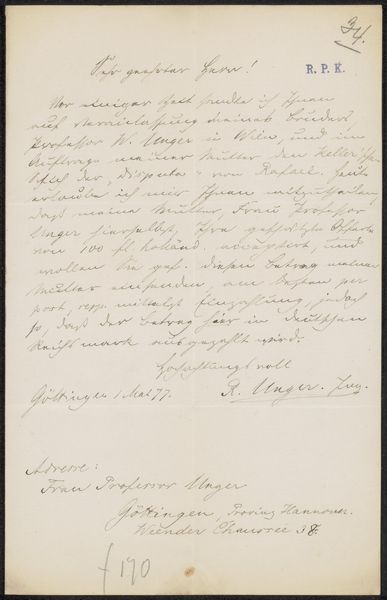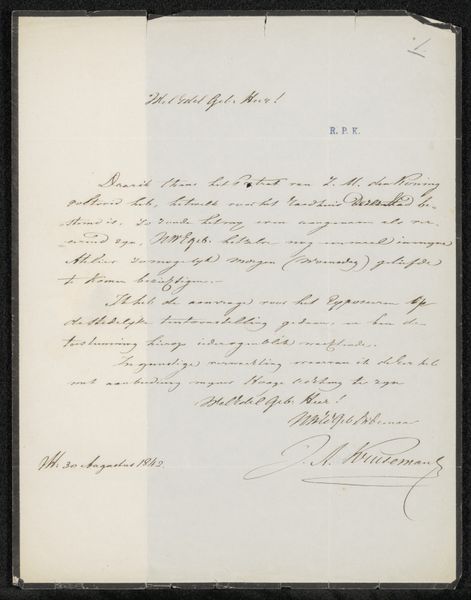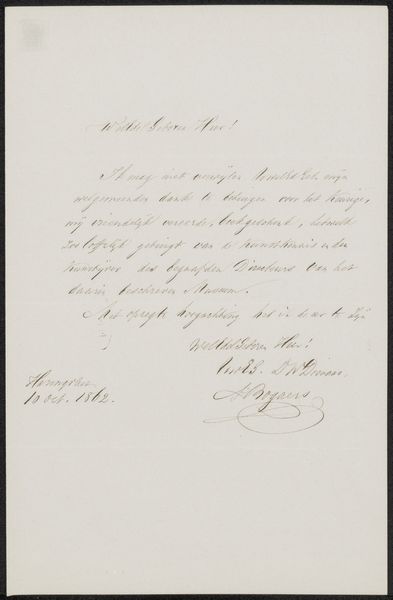
Brief aan de commissie van de Tentoonstelling van Levende Meesters in Utrecht Possibly 1866
0:00
0:00
drawing, ink, pen
#
drawing
#
hand-lettering
#
hand lettering
#
ink
#
pen
#
calligraphy
Copyright: Rijks Museum: Open Domain
Curator: I see here a fascinating material relic: Piet Schipperus's letter, "Brief aan de commissie van de Tentoonstelling van Levende Meesters in Utrecht," potentially from 1866. It's rendered in pen and ink. Editor: It really highlights the beauty and skill inherent in handwriting. It seems simple but the form takes center stage; how can we interpret such a simple presentation? Curator: Let's consider the social context. In the mid-19th century, handwriting was labor—it was a necessary skill but also could be viewed as craft. The quality of the handwriting becomes a visual marker of social status and education. Notice the flourish; consider its place in systems of labor and social interaction, when that flourish could indicate quality. How might the laborious nature of producing this elegant script speak to us today about valuing craft in an age of mechanical reproduction? Editor: It makes me think about the value we assign to things produced by hand versus by machine. Was the artist intentionally contrasting their skills, perhaps implying craft in their own name against the printing of text at the time? Curator: Precisely. Look at the deliberate formation of each letter, the way the ink bleeds into the page, recording its texture, the decisions in applying pressure in the script... are these conscious aesthetic choices intended to elevate calligraphy to the level of art? Is it also possible Schipperus is simply utilizing the tools at his disposal to achieve effective professional correspondence? Editor: It's interesting to consider both the artistic intention and the functional purpose intertwined here. Curator: Absolutely! It speaks to the fluid boundaries between 'high art' and everyday craft, particularly in how labor and materials inform the reading and reception of such a work. It prompts a new perspective and insight. Editor: I see how it invites a conversation about value, labor, and art. Thank you.
Comments
No comments
Be the first to comment and join the conversation on the ultimate creative platform.
